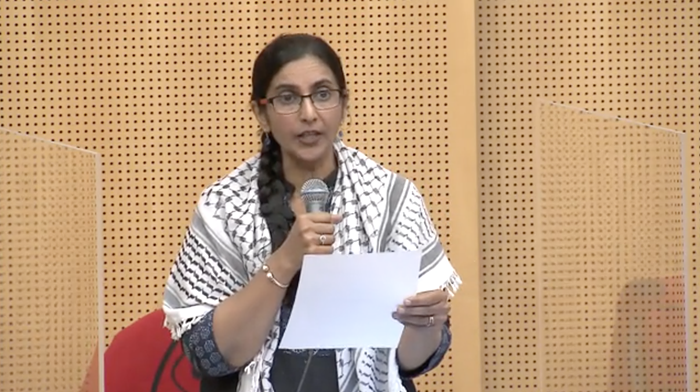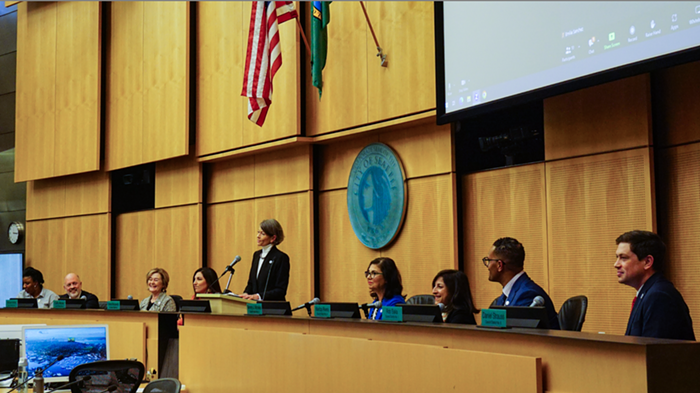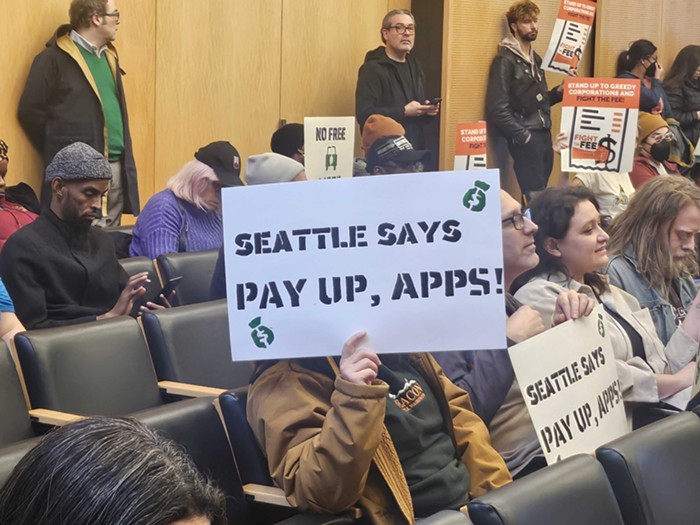As the Sonics continued to insist that every option, including moving to San Jose, Oklahoma City, or Bellevue, was "on the table," council president Nick Licata prepared to roll out a 30-year Seattle Center recovery plan of his own—one that would enable Seattle Center to survive "with or without the Sonics." Pacing around his office Friday, Licata excitedly described his scheme: $30 million for KeyArena, $175 million for long-term capital projects, and "significantly more than" that for arts programming around King County. But when pressed for specifics (such as: what would all those millions pay for?), Licata and activist Chris Van Dyk, with whom he was meeting, hesitated: "We need a better sense from Seattle Center what they need," Van Dyk said. Licata's goals are laudable—study after study has shown that pro sports teams don't help local economies—but without some specific projects in mind, it's hard to see how Licata's plan will ever make it out of the Legislature, much less past tax-weary Seattle voters.
Georgetown, already home to sex-offender housing, airplane noise, and a proposed red-light district, has had its share of challenges. Now the neighborhood is fighting efforts to make it a dumping ground for the city's trash—literally. Last week, Seattle Public Utilities (SPU) announced plans to put a "multimodal garbage transfer station"—basically, Penn Station for the city's refuse—a few hundred yards from the heart of Georgetown. The site, which is just across the railroad tracks from Boeing Field, was one of several that SPU considered; the others, including a site in Interbay, near Magnolia, and two on Harbor Island, were rejected for reasons that remain somewhat mysterious. SPU director Chuck Clarke said in a letter earlier this month that Georgetown was chosen for "its industrial character, proximity to major arterials," and propinquity to railroad tracks. But it doesn't take a huge leap of logic to speculate that the city might have chosen Georgetown because its working-class residents lack the political clout of the Port of Seattle (which owns the sites on Harbor Island) and (wealthy, white) Magnolia.
Among other concerns, Georgetown residents worry that the transfer station will bring with it noise, pollution, rodents, and trucks. As Kathy Nyland, president of the Georgetown Business Association, puts it, "We've been fighting for more parking, and they've given us more traffic."
SPU director Clarke is one of just three city department heads who have to be reappointed by the council. But that could change this summer, when a special council committee will take up potential amendments to the city charter, including one that could make all department heads subject to reappointment. Peter Steinbrueck, who will head the committee, says the decision to revisit the charter was not prompted by the controversy swirling around Parks Department head Ken Bounds, subject of a recent citizen protest. However, Steinbrueck says, "there should be some line of accountability. I don't think anybody is guaranteed a job for life around here, and they shouldn't be."


















